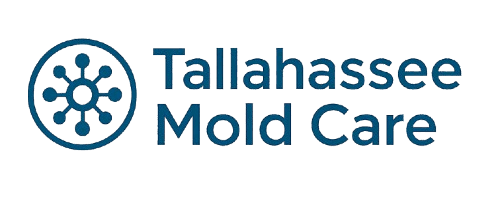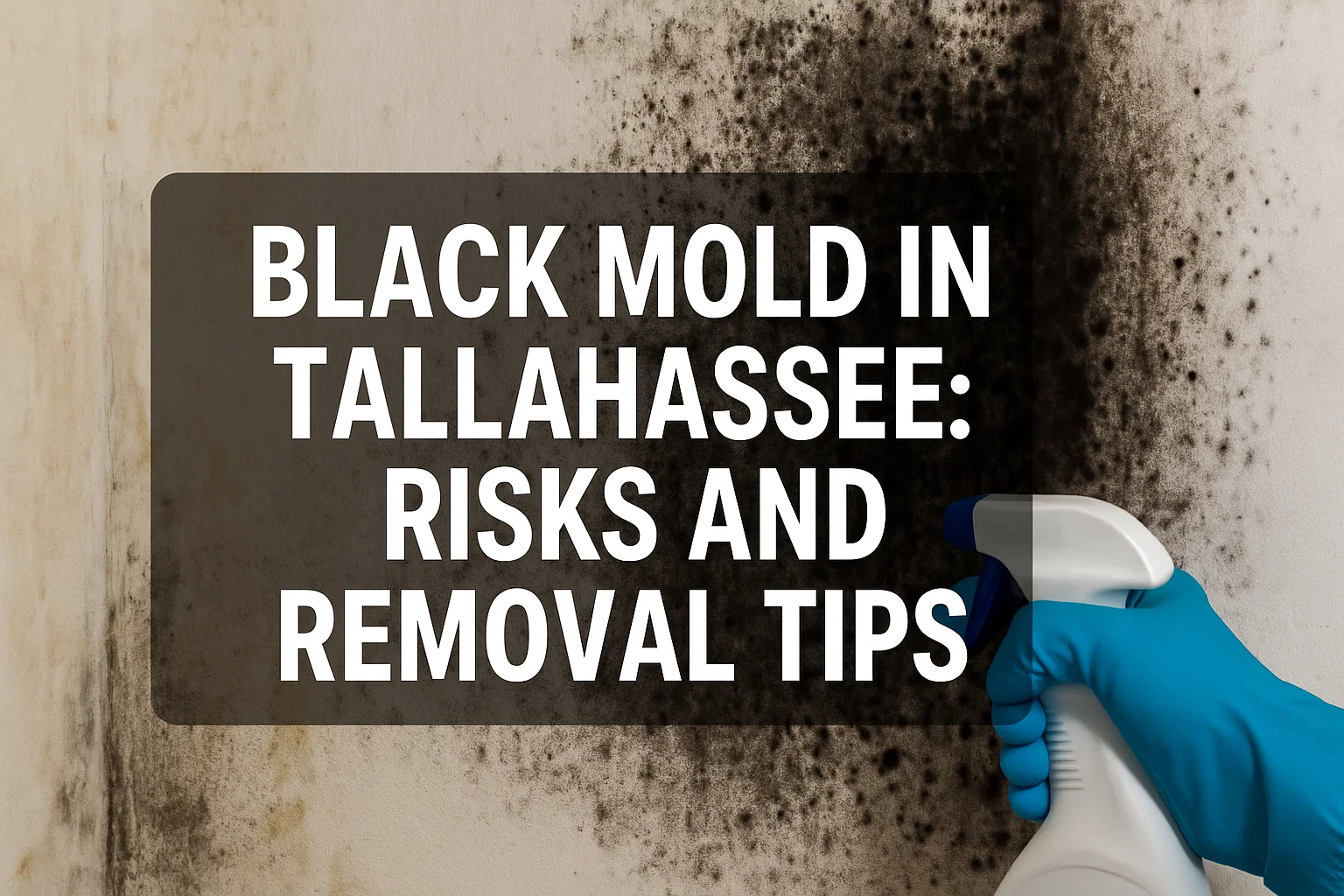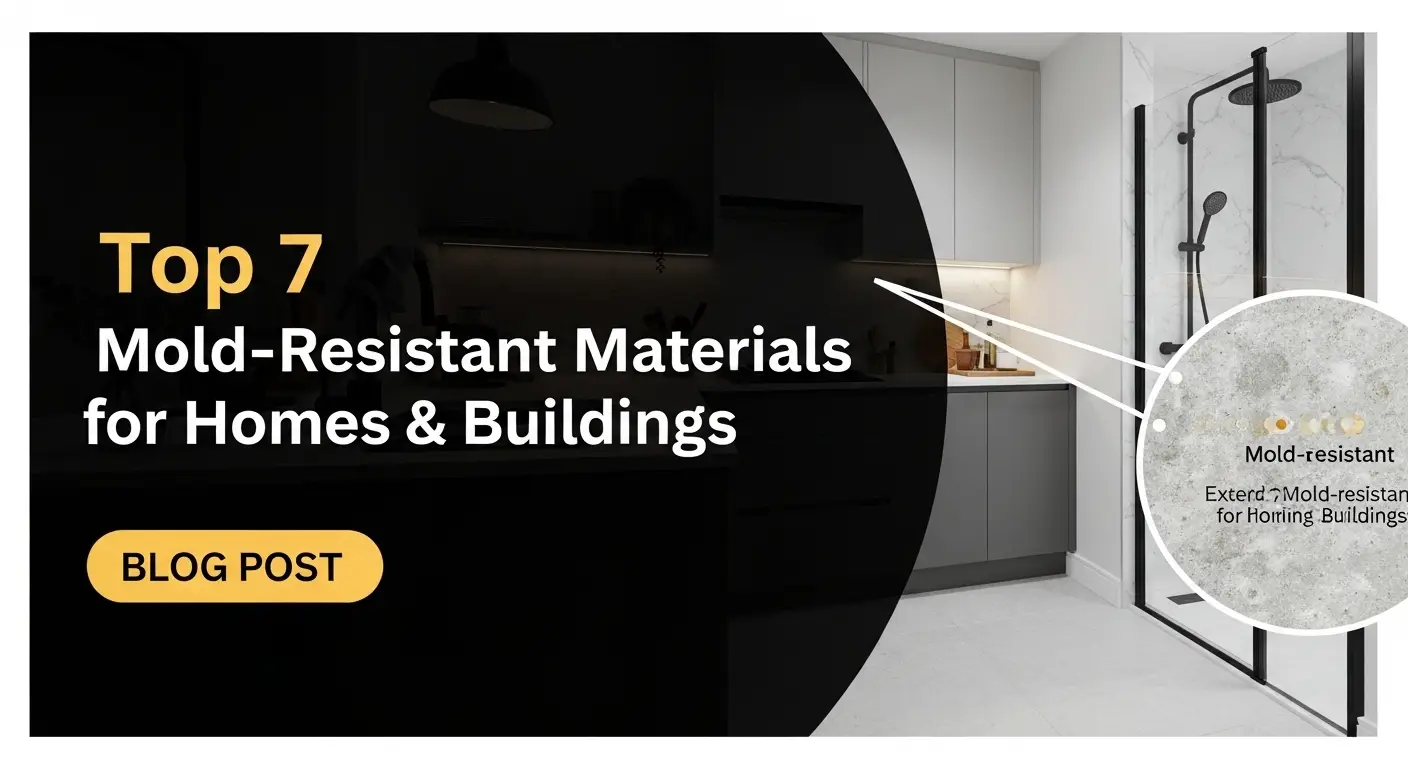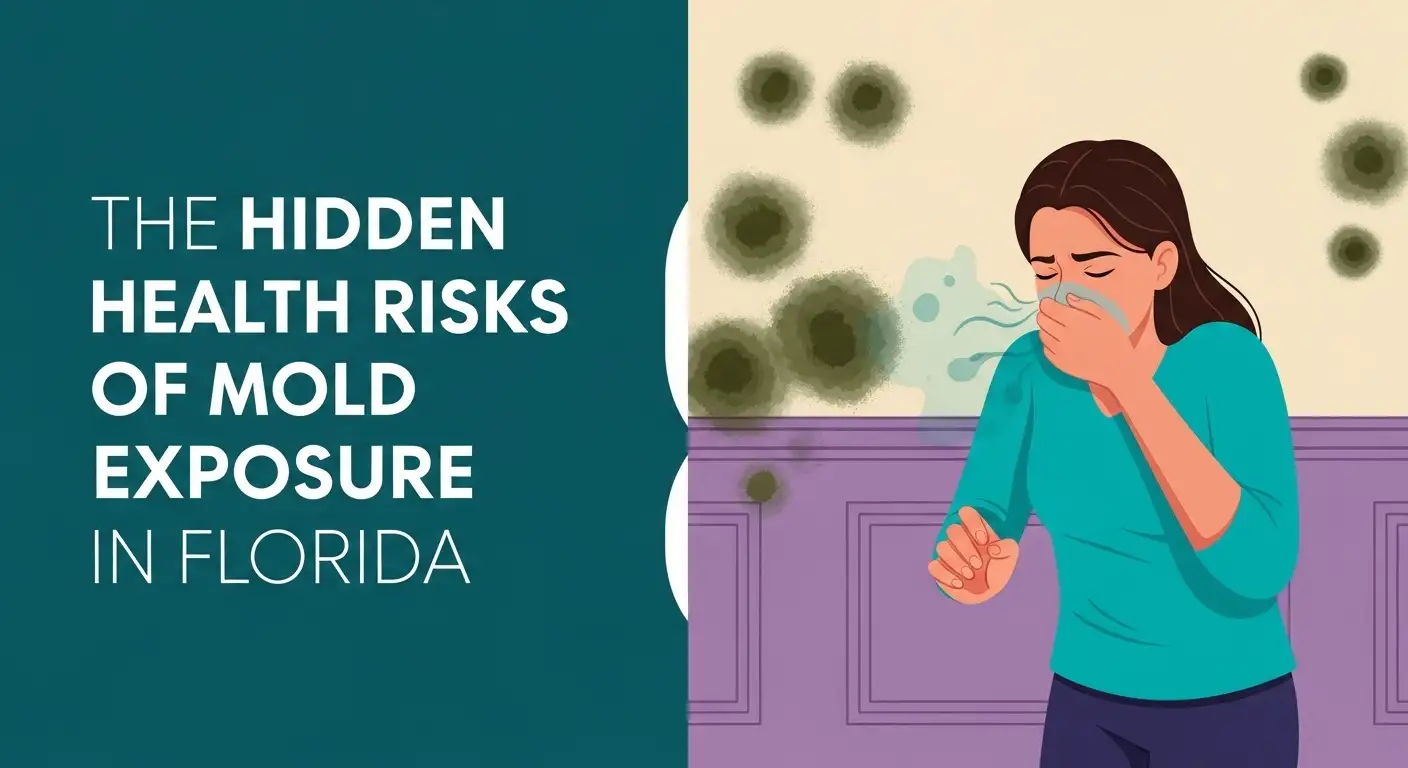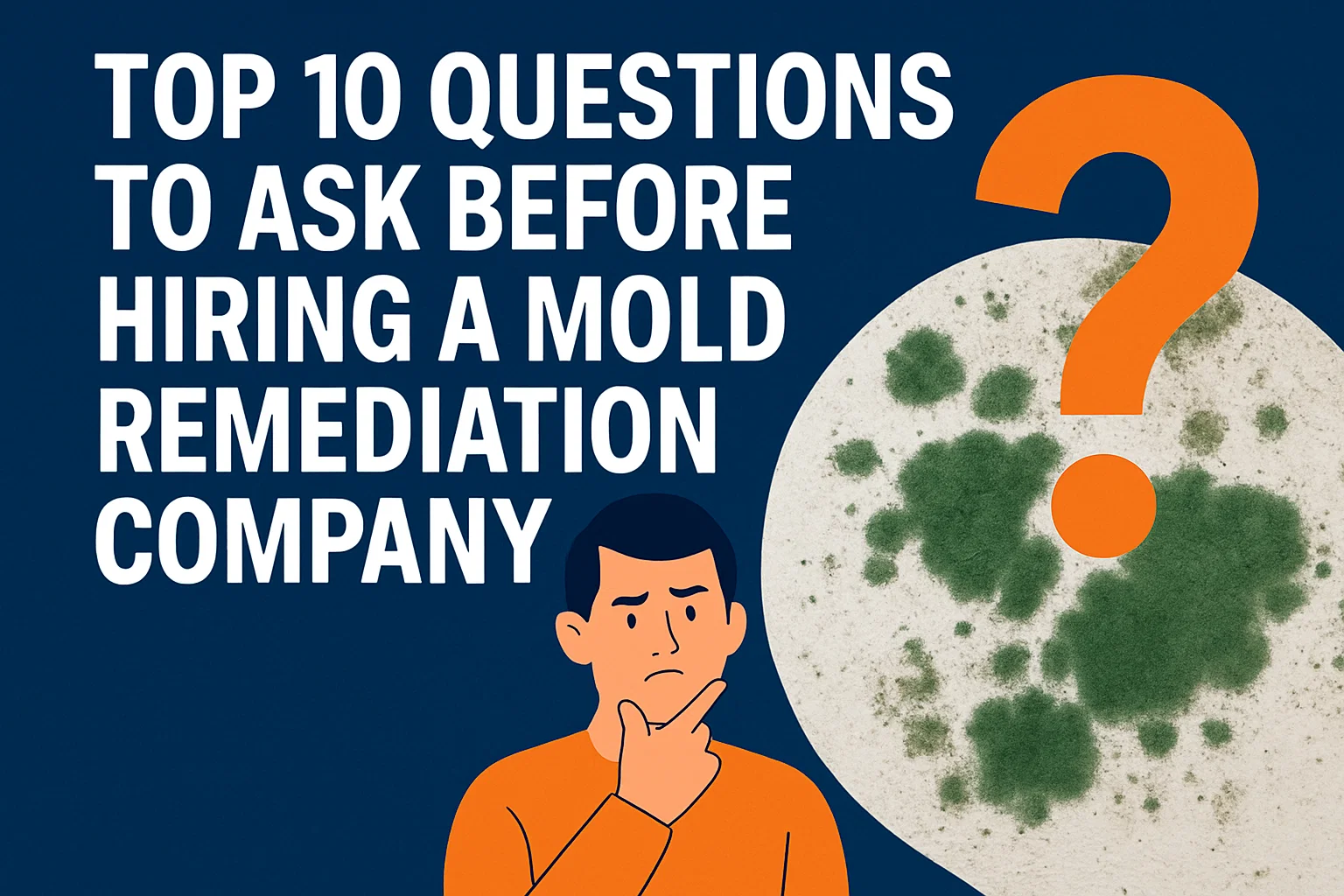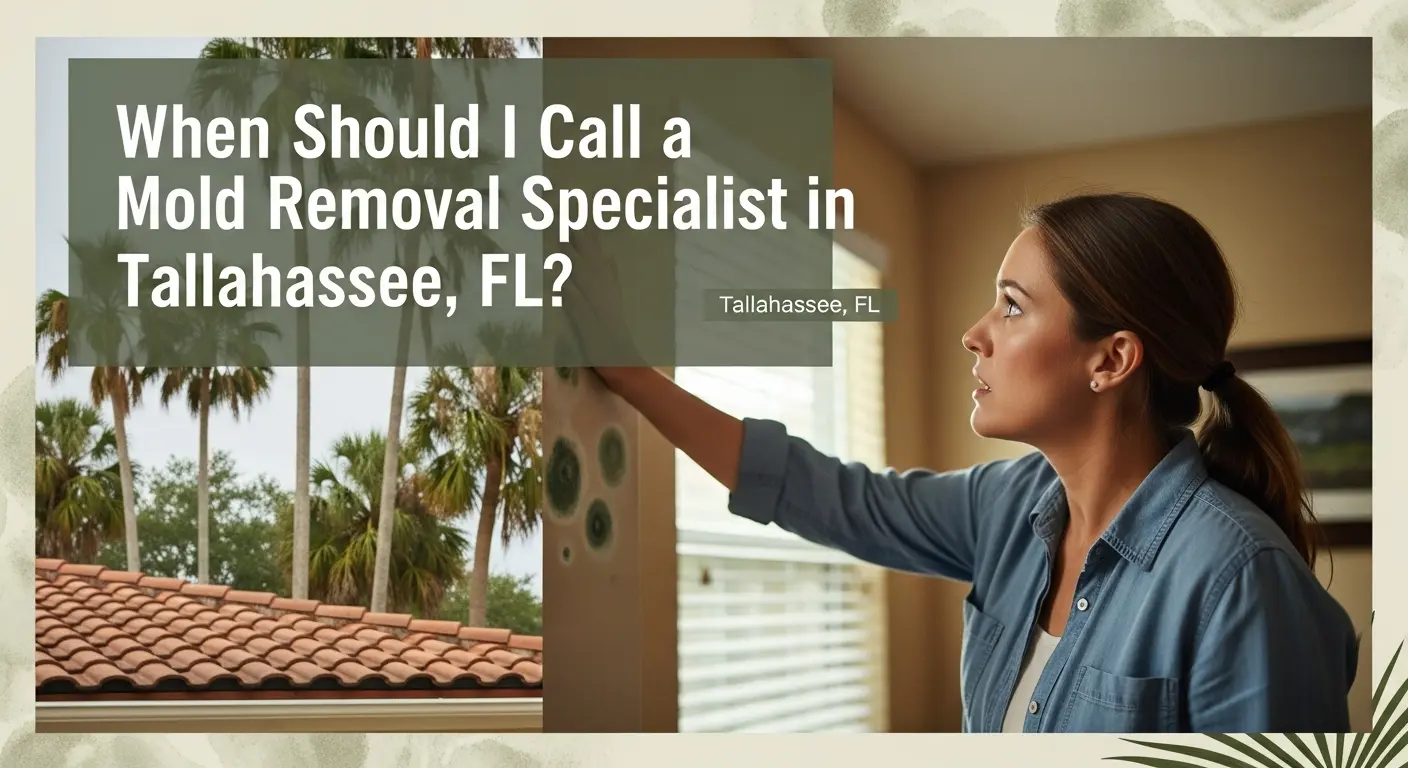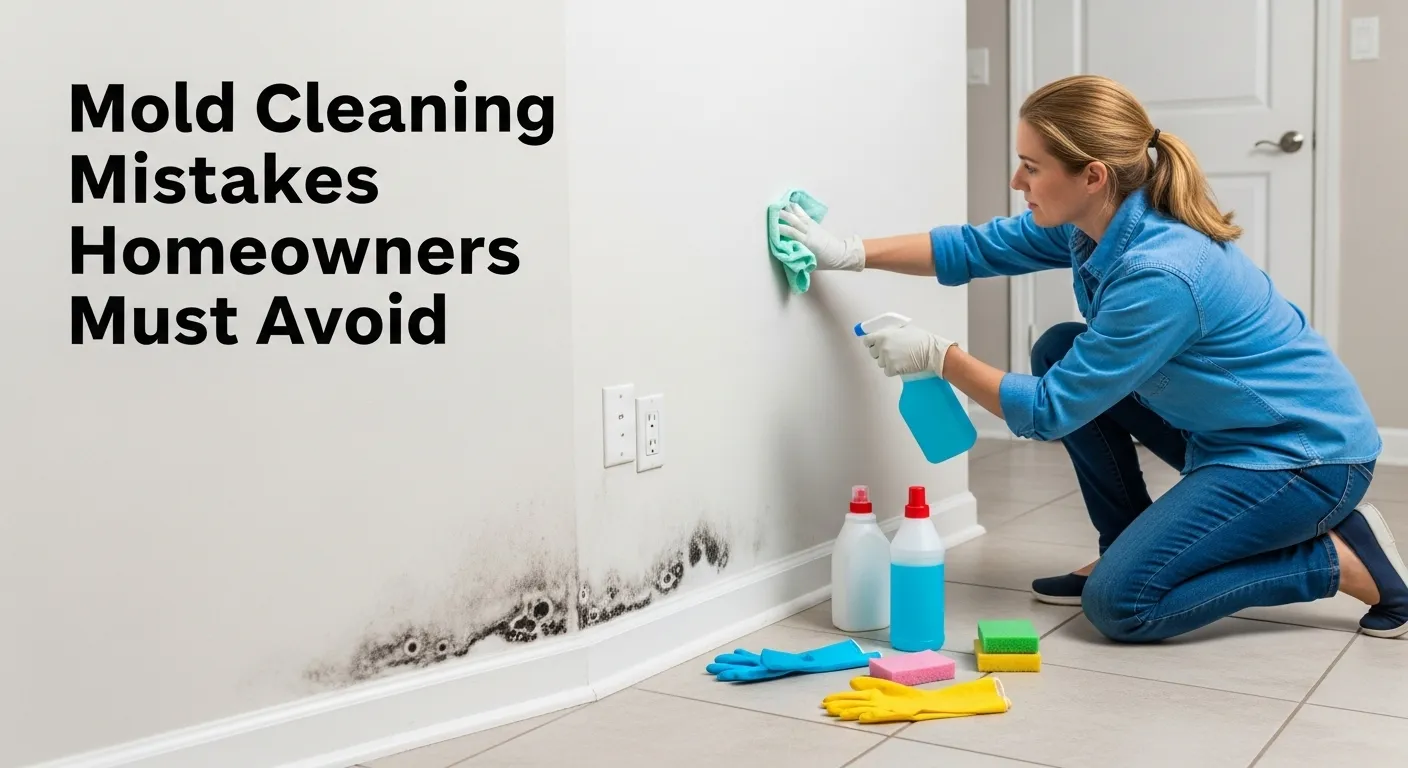Living in Florida, particularly in Tallahassee, means facing a climate that encourages mold growth. High humidity, often above 60%, creates ideal conditions for mold to thrive in homes. Mold can harm your health, causing allergies or breathing issues, and damage your property if not addressed. This Complete Guide to Mold Remediation in florida offers clear, practical advice for Tallahassee homeowners. It covers mold basics, prevention, professional remediation, costs, and legal considerations to help you protect your home and family.
Why Mold is a Bigger Issue in Florida
Florida’s warm, humid climate makes mold a constant threat. In Tallahassee, humidity often exceeds 70% in summer, providing moisture for mold to thrive. Frequent rainfall, especially during the wet season (May to October), can seep into homes through leaks in roofs or windows. This water intrusion creates damp conditions where mold grows quickly, often within 24-48 hours.
Hurricane season, from June to November, worsens the problem. Heavy rains and flooding from storms can soak homes, leading to widespread mold if not dried promptly. Tallahassee, though inland, still faces significant rainfall during hurricanes, increasing mold risks for homeowners. If you’re in Woodville, schedule a professional mold inspection in Woodville to pinpoint hidden moisture and mold before it spreads.
Impact on Homes
Mold causes significant structural damage. It grows on organic materials like wood, drywall, and carpet, breaking them down over time. This can weaken a home’s framework, leading to costly repairs. In Florida’s humid climate, mold can penetrate deep into materials, making remediation more challenging. For example, mold in walls or under floors may require removing and replacing large sections of a home. The QCI Restoration Experts highlight that mold can also cause discoloration and musty odors, reducing a home’s value and livability.
Impact on Health
Mold exposure triggers health issues. It can cause sneezing, coughing, or itchy eyes. For people with asthma or allergies, mold worsens symptoms, sometimes leading to severe respiratory problems. Toxic molds, like black mold, may pose serious risks with prolonged exposure, especially for children or those with weak immune systems.
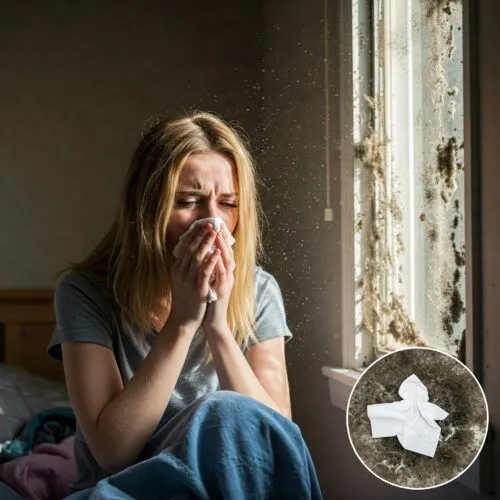
By understanding these factors, of Florida Department of Health Tallahassee homeowners can take steps to prevent mold and protect their homes and health.
Detailed Analysis of Mold Issues in Florida
Florida’s climate creates a perfect storm for mold growth, making it a significant concern for homeowners, particularly in Tallahassee. High humidity, frequent rainfall, and hurricane season combine to foster mold, which can damage homes and harm health. This section explores these factors in depth, providing actionable insights for prevention and management.
Climate Factors Driving Mold Growth
- High Humidity
Florida’s humidity levels are a primary driver of mold growth. In Tallahassee, summer humidity can reach 70% or higher, creating a moist environment where mold spores thrive. Mold needs moisture to grow, and uncontrolled indoor humidity allows spores to settle on surfaces like walls, ceilings, and carpets. According to the Florida Department of Health, maintaining indoor humidity below 60% is critical to preventing mold. - Frequent Rainfall
Florida’s frequent rains, especially during the wet season (May to October), lead to water intrusion in homes. Leaks from roofs, windows, or doors introduce moisture that mold uses to grow. Even minor leaks, if not addressed within 24-48 hours, can trigger mold growth. Tallahassee’s rainy climate increases this risk, as water can seep into poorly sealed homes, creating damp conditions ideal for mold. - Hurricane Season
From June to November, Florida’s hurricane season brings heavy rains, flooding, and wind damage. These events can saturate homes, leading to extensive mold growth if not dried quickly. Tallahassee, while less prone to direct hurricane hits, still experiences significant rainfall and occasional flooding during storms, amplifying mold risks. The EPA notes that water damage from storms must be addressed promptly to prevent mold.
Why Florida Stands Out
Unlike drier or cooler climates, where mold growth is seasonal or less prevalent, Florida’s conditions support mold year-round. The combination of high humidity, frequent rain, and hurricane risks creates a unique challenge. Tallahassee’s climate, with its high humidity and susceptibility to heavy rainfall, makes mold a constant concern for homeowners. This is particularly true in areas near rivers or flood-prone zones, where water damage is more likely.
Practical Steps for Homeowners
To combat Florida’s mold-friendly climate, homeowners should:
- Use dehumidifiers to keep indoor humidity below 60%.
- Fix leaks in roofs, windows, or pipes immediately.
- Dry wet areas within 24-48 hours to prevent mold growth.
- Prepare for hurricane season by securing homes against water intrusion.
By understanding these climate-driven challenges, Tallahassee homeowners can take proactive steps to prevent mold and protect their homes and health. Early action is key to avoiding costly repairs and health issues caused by mold.
IV. Signs of Mold Infestation
Mold can be a silent invader, sometimes visible but often hiding in places you wouldn’t expect. In Florida’s humid climate, especially in Tallahassee, knowing how to spot mold infestation is crucial for homeowners. Early detection prevents costly damage to your home and protects your family’s health. This section breaks down the visible and hidden signs of mold, offering clear, actionable insights to help you identify and address mold growth before it becomes a bigger problem.
Visible Signs of Mold
Mold often announces its presence through clear visual or sensory clues. Here are the key visible signs to watch for:
- Discoloration: Mold appears as patches of green, black, white, or blue-green on surfaces like walls, ceilings, floors, or furniture. It can look fuzzy, slimy, or powdery, sometimes mistaken for a stain or dirt. Common molds like Cladosporium or Penicillium show up in high-moisture areas, such as bathrooms, kitchens, or basements. According to Bob Vila, these patches are undeniable proof of mold when spotted on surfaces.
- Musty Odors: A strong, earthy, or musty smell is a telltale sign of mold, even if you can’t see it. This odor comes from microbial volatile organic compounds (mVOCs), chemicals released by mold as it grows. The smell is often most noticeable in damp areas like laundry rooms, bathrooms, or near leaky pipes. Green Orchard Group notes that this musty smell can intensify over time, signaling a growing mold problem.
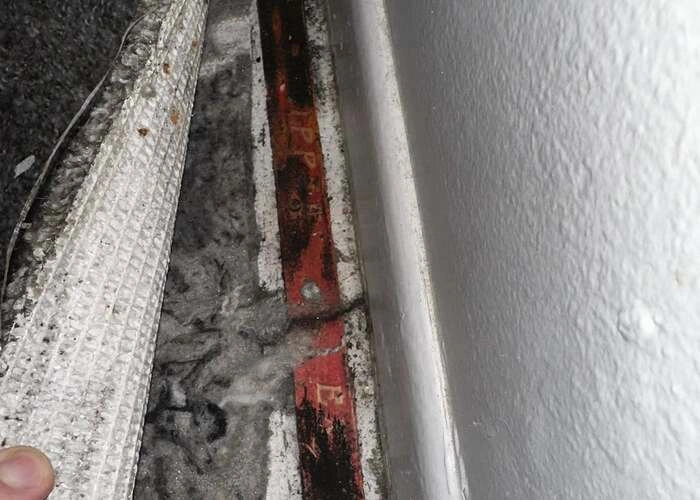
Hidden Signs of Mold
Mold doesn’t always make itself obvious. It can grow in hidden spots, making it harder to detect without careful inspection. Here are the key hidden signs to look for:
- Water Damage History: A past of leaks, flooding, or high humidity often leads to mold growth in concealed areas, such as behind walls, under carpets, or in crawl spaces. Homes in Tallahassee, where heavy rainfall is common, are especially at risk. If your home has experienced water damage that wasn’t fully dried within 24-48 hours, mold is likely present. Southern Living emphasizes that moisture from past water issues is a major cause of hidden mold.
- Unexplained Health Symptoms: If you or your family experience allergies, asthma flare-ups, coughing, or breathing problems that improve when you’re away from home, mold could be the culprit. These symptoms are especially concerning for children, the elderly, or those with weakened immune systems. Healthline notes that mold exposure can trigger allergy-like symptoms or worsen chronic lung conditions, making it a key indicator of hidden mold.
- Condensation and High Humidity: Excessive moisture, like condensation on windows, walls, or pipes, signals conditions ripe for mold growth. In Florida, where humidity often exceeds 60%, this is a common issue. Wet surfaces provide the moisture mold needs to thrive, even in hidden areas. The New York State Department of Health highlights that high humidity is a primary driver of mold in homes.
- Warping or Peeling Materials: If you notice wallpaper, paint, or wood buckling, cracking, or peeling, hidden mold might be the cause. Mold weakens materials over time, causing visible damage even if the mold itself is out of sight. Jenkins Environmental points out that warping or peeling is a common sign of mold growing behind surfaces.
Spotting these signs early lets you act fast to stop mold from spreading. Small patches might be manageable, but large or hidden mold often requires professional help to ensure your home stays safe.
Why Early Detection Matters
Spotting mold early prevents it from spreading and causing more damage. Visible mold can often be cleaned if it’s a small area, but hidden mold may require professional help to locate and remove safely. In Tallahassee’s humid climate, where mold grows quickly, acting fast is critical. Ignoring signs can lead to structural damage, costly repairs, and worsening health issues.
By recognizing these signs, Tallahassee homeowners can take swift action to address mold, preventing it from becoming a bigger problem. Whether it’s a small patch you can clean yourself or a hidden issue requiring professional help, early detection keeps your home and family safe.
Detailed Analysis of Mold Prevention Strategies for Tallahassee Homes
By controlling humidity, ensuring proper ventilation, maintaining your home, and using mold-resistant products, you can keep mold at bay. This section provides practical, actionable strategies tailored to Tallahassee’s unique challenges, helping you protect your home and health.
Controlling Humidity (Tallahassee-Specific Humidity Levels)
Mold needs moisture to grow, and levels above 60% create ideal conditions. To prevent this, keep indoor humidity between 30-50% using dehumidifiers or air conditioners. The Florida Department of Health advises drying wet areas within 24 hours to stop mold growth. Use a hygrometer to monitor humidity, especially in basements or crawl spaces. Avoid carpeting high-moisture areas like bathrooms or basements, as carpets trap moisture. If your air conditioner struggles to keep humidity low, have it inspected for issues, as suggested by the EPA.
Proper Ventilation Techniques
Ventilation removes moist air, reducing mold risk in Tallahassee’s humid climate. Install exhaust fans in bathrooms, kitchens, and laundry rooms to vent damp air outside. Run fans during and after showers or cooking. Open windows when weather permits to increase airflow, especially in dry conditions. For areas with poor natural ventilation, like basements or attics, use mechanical fans or install vents to improve circulation. Regularly clean and maintain HVAC systems, as dirty filters or ducts can trap moisture, creating mold hotspots.
Regular Maintenance to Prevent Water Damage
Water intrusion is a primary cause of mold in Tallahassee homes, where heavy rainfall and hurricanes are common. Regular maintenance helps prevent leaks and moisture buildup. Inspect roofs, gutters, and downspouts twice a year for blockages or damage, as clogged gutters can cause water to pool and seep into your home. Check plumbing systems, including pipes, faucets, and toilets, for leaks, and repair them immediately. Maintaining appliances like washing machines and dishwashers prevents unexpected leaks. Ensure the ground around your home slopes away from the foundation to direct rainwater away. Test sump pumps, if installed, to ensure they work during heavy rains. Santa’s Little Helpers notes that addressing minor water damage early prevents mold growth and costly repairs.
Use of Mold-Resistant Products
Mold-resistant products create a barrier against mold in moisture-prone areas. Use mold-resistant paint containing mildewcides on walls in bathrooms, kitchens, and laundry rooms to inhibit mold growth. Choose moisture-resistant drywall with a fiberglass core instead of paper, as it resists water damage better. For flooring, opt for non-porous materials like tile, laminate, or vinyl instead of carpet, which traps moisture. Seal showers, sinks, and windows with mold-resistant caulk or sealants to prevent water seepage. RestorationMaster Finder recommends these materials for humid climates like Tallahassee’s. Insulate pipes and exterior walls to prevent condensation, as suggested by BigRentz. Regularly clean and disinfect surfaces with mold-inhibiting cleaners to remove spores before they grow.
By implementing these strategies, Tallahassee homeowners can create a mold-resistant environment, protecting their homes and health from the challenges of Florida’s humid climate. Consistent effort and early action are key to preventing mold growth.
VI. DIY vs. Professional Remediation
Mold remediation in Florida’s humid climate, particularly in Tallahassee, requires careful decision-making to protect your home and health. Knowing when to handle mold yourself and when to call professionals is key to effective mold removal. This section provides clear guidance on managing small infestations, recognizing when professional help is needed, and understanding the risks of improper remediation, tailored for Tallahassee homeowners.
When to Handle Small Infestations Yourself
For small mold infestations—less than 10 square feet—on non-porous surfaces like tiles, glass, or metal, DIY remediation is often manageable. The Florida Department of Health states that homeowners can handle small areas if they follow proper safety protocols. This approach works best for visible mold in accessible areas, such as bathroom tiles or kitchen countertops.
Steps for Safe DIY Mold Remediation:
- Wear Protective Gear: Put on gloves, goggles, and an N95 respirator to avoid inhaling mold spores or touching mold. The CDC recommends N95 respirators to protect against mold exposure.
- Contain the Area: Seal off the area with plastic sheets and tape to prevent spores from spreading to other parts of your home. Use duct tape to secure the plastic.
- Clean Thoroughly: Scrub moldy surfaces with a mixture of water and detergent or a commercial mold cleaner. Avoid bleach, as it may not kill mold on porous surfaces and can release harmful fumes.
- Remove Contaminated Materials: If mold is on porous materials like drywall or carpet, cut out and replace the affected sections. Seal removed materials in plastic bags for safe disposal.
- Dry Completely: Use fans or dehumidifiers to ensure the area is fully dry, as moisture can cause mold to return.
Key Considerations: If mold reappears quickly, spreads, or involves contaminated water (e.g., sewage), stop and call a professional. DIY is not suitable for toxic molds like Stachybotrys (black mold), which require specialized handling.
When to Call Professionals
For larger or more complex mold issues, professional remediation is essential. In Florida, mold remediators must be licensed by the Department of Business and Professional Regulation, ensuring they follow state regulations and industry standards. Professionals have the tools, training, and expertise to handle mold safely and effectively.
Situations Requiring Professional Help:
- Large Infestations: Mold covering more than 10 square feet requires professional intervention, as per EPA guidelines. Larger areas increase the risk of spore spread and health issues.
- Porous Materials: Mold on drywall, carpet, or insulation often penetrates deeply, requiring removal and replacement by professionals.
- Hidden Mold: Suspected mold behind walls, under floors, or in HVAC systems needs specialized equipment like moisture meters or thermal imaging for detection.
- Toxic Mold: Suspected toxic molds, like black mold, require testing and safe removal to avoid health risks. Miami Mold Specialists emphasize that toxic mold is too dangerous for DIY attempts.
- Health Concerns: If anyone in your home has allergies, asthma, or a weakened immune system, professionals minimize exposure risks.
We provide professional services which include inspection, containment, removal, and clearance testing to ensure your home is mold-free. We also address moisture sources to prevent recurrence.
Risks of Improper Remediation
Improper mold remediation can worsen the problem and create serious risks. Mishandling mold can lead to health issues, structural damage, and legal complications, especially in Florida’s regulated environment.
Why Professionals Are Essential: Professionals follow strict protocols as we do. We hold the EPA and the Institute of Inspection, Cleaning and Restoration Certification (IICRC), to ensure complete mold removal and address underlying issues. This prevents health risks and ensures long-term results.
Our Professional Mold Remediation Process
Professional remediation ensures safe, thorough mold removal, especially for large or hidden infestations. Our Licensed experts follow a structured process to protect your home and health while meeting Florida’s strict regulations.
Assessment and Planning
Our professionals start with a detailed inspection to find mold and its moisture source. According to Florida Statutes Chapter 468, we use tools like moisture meters and air sampling to map mold spread. We create a tailored plan to remove mold and fix issues like leaks or high humidity, ensuring long-term results.
Safety Precautions and Personal Protective Equipment (PPE)
Mold spores can harm health, so our professionals wear PPE, including:
- N95 respirators to block airborne spores.
- Heavy-duty gloves to protect hands.
- Goggles to shield eyes.
- Disposable coveralls and foot covers to avoid spreading mold.
These precautions, aligned with OSHA standards, keep our workers safe and prevent cross-contamination in your home.
Containment Strategies
To stop mold spores from spreading, our professionals seal the affected area with plastic sheeting and duct tape. We use negative air machines with HEPA filters to pull air out, keeping spores contained. Air scrubbers clean the air, removing mold particles.These steps are critical to protect unaffected areas.
Removal of Moldy Materials
Porous materials like drywall, carpet, or insulation with mold must be removed. Our professionals bag and seal these items to prevent spore release, following EPA guidelines. Non-porous surfaces like tile or metal can be cleaned, but porous items are often unsalvageable due to deep mold penetration.
Cleaning and Sanitizing Non-Porous Surfaces
Non-porous surfaces are scrubbed with detergent and water or commercial mold cleaners. HEPA vacuums remove loose spores. Sanitizing kills remaining mold, preventing regrowth. The Florida Department of Health notes that professional cleaning ensures thorough mold removal for larger infestations and we do it carefully.
Drying the Area
Moisture fuels mold, so we dry the area completely using dehumidifiers and fans. In high humidity, extra drying steps are crucial to prevent mold from returning. All materials, including walls and floors, must be dry before reconstruction begins.
Post-Remediation Verification
Professionals test air or surfaces to confirm mold removal. Samples are compared to pre-remediation levels to ensure safety. For large projects, a certified industrial hygienist may conduct clearance testing. This step, often required by insurers, verifies your home is mold-free and safe to occupy.
Reconstruction and Prevention Measures
After mold removal, professionals replace damaged materials like drywall or flooring. They use mold-resistant products, such as fiberglass-backed drywall or mildew-resistant paint, to protect against future growth. Fixing moisture sources, like leaks or poor ventilation, prevents recurrence, especially in Florida’s damp climate.
Choosing the Right Contractor
Asking the right questions helps you identify a qualified, reliable contractor. Here are seven essential questions to ask, tailored for Tallahassee homeowners:
- Are you licensed by the Florida DBPR for mold remediation?
Confirm their license status, as it’s a legal requirement for jobs over 10 square feet. Ask for their license number to verify. - How many years have you worked on mold issues in Florida homes?
Experience in Florida’s humid climate, especially with Tallahassee’s frequent rainfall and hurricane risks, ensures they understand local challenges. - Can you share references from Tallahassee clients?
References from local clients provide insight into their work quality and reliability in similar conditions. - Does your process follow EPA and industry standards?
Ensure their methods align with EPA guidelines and standards from the Institute of Inspection, Cleaning and Restoration Certification (IICRC) or Indoor Air Quality Association (IAQA). - Do you provide a warranty or guarantee on your work?
A warranty offers peace of mind if mold returns due to improper remediation, as noted by Mold Solutions. - Can you provide a detailed cost estimate and explain the costs involved?
A transparent estimate helps you understand the scope of work and avoid unexpected fees.
By carefully selecting a licensed, experienced, and transparent contractor, Tallahassee homeowners can ensure effective mold remediation, protecting their homes and health in Florida’s challenging climate.These questions help you assess a contractor’s expertise, transparency, and suitability for your mold remediation needs. At Tallahassee Mold Care, we meet all these criteria and more. Learn about our qualifications and experience on our about page.
Costs of Mold Remediation
In 2025, mold remediation in Florida typically costs between $1,500 and $6,000, with an average of around $2,365, according to This Old House. Small infestations, covering less than 10 square feet, such as a bathroom patch, may cost as little as $500 to $1,000. Larger projects, like mold in attics, basements, or HVAC systems, can escalate to $10,000 to $15,000 or more, especially in extensive cases involving toxic molds or significant structural damage. In Tallahassee, where humidity often exceeds 70%, costs align with these state averages but may vary slightly due to local labor rates and demand
Conclusion
Mold is a serious issue in Florida, especially in Tallahassee’s humid, rainy climate. High humidity, frequent rainfall, and hurricanes create ideal conditions for mold growth, threatening homes and health. This guide explained how to identify mold through visible signs like discoloration or hidden clues like health symptoms. It outlined prevention strategies, such as controlling humidity and using mold-resistant materials.
For remediation, small patches may be manageable with DIY methods, but larger or hidden mold requires licensed professionals who follow Florida’s strict regulations. Costs range from $1,500 to $6,000, with insurance covering only specific cases. Legal considerations, including licensing and disclosure laws, protect homeowners and ensure compliance. For Bradfordville residents, our mold inspection Bradfordville service uses the same IICRC‑certified thermal imaging and moisture mapping for pinpoint accuracy.
